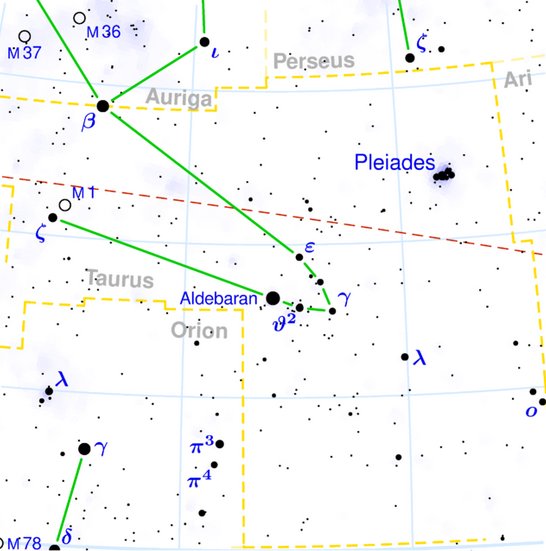Thus we cannot expect Gb9-27
to be
directly equivalent to Ga1-8.
|
MARCH 26 (85) |
3-27 (*6) |
28 |
29 (88) |
 |
 |
 |
 |
|
Ga1-5 |
Ga1-6 |
Ga1-7 |
Ga1-8 |
|
May 29 |
30 (150) |
31 |
June 1 (152 = 115 + 37) |
|
... On
the twenty-fifth day of the
first month (Vaitu Nui),
Ira and Makoi
set sail; on the first day
of June ('Maro'), the
bow of Ira's canoe
appeared on the distant
horizon, came closer and
closer on its course, and
sailed along, and finally
(one) could see the (new
home) land ... [E:17
→ 152 - 5 * 27] |
 |
 |
 |
 |
| kava o
te ariki |
e
huarae - ma to rima - ki te
ragi |
e rere
ia mai - ki to huki |
ko to huki ka to ihe -
kua reva te ika |
|
Rae. First
(always follows the noun):
te tagata ra'e, the
first man; (the other
ordinal numerals, second,
third, etc., precede the
noun. Translator's note:
ra'e is likely the noun
which means forehead, face,
in other Polynesian
language, e.g. Tahitian
rae). Vanaga. 1.
Commencement, beginning, to
strike up, to essay, to
occasion, to proceed,
former, primitive,
precedent, predecessor,
first-fruits; rae ki te
mea hou, to innovate;
oho rae, to march at the
head; tagata rae,
advance guard, van; raega,
commencement, beginning,
occasion, first-fruits. 2.
To attack, to provoke;
kakai rae, toua rae,
to provoke. Churchill. |
|
Bb9-24 (350) |
Bb9-25 |
Bb9-26 |
Bb9-27 (353) |
|
Dec 16 (85 + 265) |
17 (351) |
18 |
19 (88 + 265) |
|
(250, Sept 5) |
(251, 6) |
(252, 7) |
(253, 8) |
|
JULY 5 (186) |
6 (251 - 64) |
GREDI (188) |
8 (253 - 64) |
|
OBSERVED CLOSE TO THE FULL
MOON: |
 |
 |
 |
 |
|
Ga4-23 |
Ga4-24 |
Ga4-25
(108 = 188 - 80) |
Ga4-26 |
|
KERB |
*354 = 251 - 80 + 183 |
*355 |
*356 |

... With
α
Andromedae [Sirrah → Navel]
and
γ
Pegasi [Kerb], as the
Three Guides, it [Caph →
Phoenician Kaph, Hand] marks
the equinoctial colure,
itself exceedingly close to
that great circle; and,
being located on the same
side of the pole as is
Polaris, it always affords
an approximate indication of
the latter's position with
respect to that point. This
same location, 32║ from the
pole, and very near to the
prime meridian, has rendered
it useful for marking
sidereal time. When above
Polaris and nearest the
zenith the astronomical day
begins at 0 hours, 0
minutes, and 0 seconds; when
due west the sidereal time
is 6 hours; when south and
nearest the horizon, 12
hours, and when east, 18
hours; this celestial
clockhand then moving on the
heavenly dial contrary to
the motion of the hands of
our terrestrial clocks, and
at but one half the speed
...
...
τ,
4.5, with
υ,
was Al Sufi's Sa'd al
Na'amah, which Knobel
thinks should be Al
Na'āim, the Cross-bars
over a well; but they also
were known as Al Karab,
the Bucket-rope. The usual
titles for
τ
- Markab and Sagma
or Salma - are from
Bayer, but the last two
should be Salm, a
Leathern Bucket ... |
On the contrary. For instance because there were not 3
feathers in front:
|
 |
 |
|
MARCH 26 |
kava o
te ariki |
And then we can see how the division
in time-space is described
differently. Perhaps the rays from the rising Sun
was blurring the view and making
it reasonable to change away from looking
towards the east to look in the
opposite direction, to the horizon
in the west in order to get a
sharper view of the nighttime stars.
|
 |
 |
|
Nov 29 (355 - 22) |
e
huarae - ma to rima - ki te
ragi |
... The
correspondence between the winter
solstice and the kali'i rite
of the Makahiki is arrived at
as follows: ideally, the second
ceremony of 'breaking the coconut',
when the priests assemble at the
temple to spot the rising of the
Pleiades, coincides with the full
moon (Hua tapu) of the
twelfth lunar month (Welehu). In
the latter eighteenth century, the
Pleiades appear at sunset on 18
November. Ten days later (28
November), the Lono effigy
sets off on its circuit, which lasts
twenty-three days, thus bringing the
god back for the climactic battle
with the king on 21 December, the
solstice (= Hawaiian 16 Makali'i). The
correspondence is 'ideal' and only
rarely achieved, since it depends on
the coincidence of the full moon and
the crepuscular rising of the
Pleiades ...
In Bb9-25 the pattern has 3
basic components, not 2. For in Ga1-6 the
'eating hand' (kai) is an
integral part of the first
component. When making a glyph
catalogue I did not recognize the
first component as a rising fish but
saw it instead as primarily a variant of 'mountain'
(the 'last' phase before day-break).
 |
 |
 |
|
MARCH 20 (444) |
mauga |
MARCH 27 (86) |
|
May 23 (*428) |
6 (+ 365) |
May 30 (150) |
|
'April 26 (*401) |
'May 1 (121) |
|
"April 12 (*386) |
"April 19 (107 =
472) |

Mauga. Ma˙ga. 1.
Last; aga ma˙ga o te
Ariki o Hotu Matu'a,
King Hotu Matua's last
work. 2. Hill, mountain.
Mouga, mo˙ga.
Last; vÔnaga mo˙ga o
te Ariki O Hotu Matu'a,
the last words of King
Hotu Matu'a. Vanaga.
Mauga kore,
impalpable. Mouga.
1. Enough, that's all,
at last. 2. Mountain,
ridge of hills; mouga
iti, hillock; tua
mouga, mountain top;
hiriga mouga;
hillside, declivity,
slope. P Pau.: mahuga,
mountain. Mgv.: mou,
maga, mountain.
Mq.: mouna,
mouka, peak or crest
of a mountain. Ta.:
maua, moua,
mountain. 3. Extinction,
end, interruption,
solution; te mouga o
te hiriga, end of a
voyage; pagaha mouga
kore, without
consolation. 4. To get.
Churchill. |
|
MARCH 17 |
18 |
19 (78 = 142 - 64) |
20 (444 = 365 + 79) |
0h (*365) |
 |
 |
 |
 |
 |
|
Gb5-8 |
Gb5-9 |
Gb5-10 (363) |
Gb5-11 (229 + 135)
|
Gb5-12 (365) |
|
4h (60.9)
JĪSHUĬ = λ Persei
(60.7)
COR CAROLI (α
Canum Ven.) |
υ Persei (61.2) |
BEID (Egg) = ο╣
Eridani
(62.2),
μ
Persei (62.8)
VINDEMIATRIX ( ε
Virginis) |
Al Dabarān-2 (The
Follower)
HYADUM I = γ Tauri
(63.4)
*22.0 = *63.4 -
*41.4 |
HYADUM II = δ╣ Tauri
(64.2) |
 |
|
May 20 |
21 |
22 (142) |
23 (*428) |
24 (509) |
|
...
Should we try to
count from the
beginning of side b,
then the position of
Ba1-3 will become
day number 506 + 3 =
509, which 'happens
to be' equal to 365
+ 12 * 12 = 364 +
145 = 2 * 182 + 290
/ 2 (where 290 = 182
+ 108) ... |
|
░May 16 (136) |
17 |
18 |
19 (*424) |
20 (*60) |
|
'April 23 |
24 (114) |
25 (*400) |
26 (*36) |
27 |
|
"April 9 (99) |
10 (465) |
11 |
12 (*22) |
13 |
In the G text the glyph
numbers on side b suggests
a reference to the Julian equinox, because
when the Sun (at the time of
rongorongo) reached April 25
(115) then the Full Moon
would have been at October
25 (298 = 115 + 183) and
this was evidently at Gb8-2
(214 = 298 - 84):
 |
 |
 |
27 + 7 |
 |
|
Gb8-1 |
Gb8-2 (214) |
Gb8-3 (444) |
Ga1-8 |
|
April 24 |
25 (115) |
26 |
June 1 (152) |
|
Oct 24 |
25 |
26 |
Dec 1 (335) |
|
 |
 |
 |
 |
 |
|
Gb8-4 (216) |
Gb8-5 (446) |
ihe tau |
ika |
Ga1-8 |
|
Oct 27 (300)
|
TERMINALIA |
June 1 (152) |
|
152 (June 1) -
37 = 115 (April
25) = 300 (Oct
27) - 185 |
There are 229 glyphs on
side a and assuming we
should add 84 right
ascension days before
beginning to read on side b this
implies 229 + 84 + 1 = 314
(→ π) should be the
day number at
Gb1-1.
216 (Gb8-4) + 84 =
300 = 445 (= 5 * 89) - 145 (= 5
* 29) = 229 + 216.
|
 |
 |
|
Ga8-26 (229) |
Gb1-1 (230 +
84 = 314) |
However, according
to the structure for
the fixed stars
there should not be
any such sudden
jump ahead:
|
 |
 |
 |
|
π Draconis,
ARKAB PRIOR
= β╣
Sagittarii
(293.0),
ARKAB
POSTERIOR =
β▓
Sagittarii,
ALRAMI (The
Archer) = α
Sagittarii
(293.2), χ
Sagittarii
(293.6) |
DENEB OKAB
(Tail of the
Eagle) = δ
Aquilae
(Ant.)
(294.0),
α VULPECULAE
(Little Fox)
(294.9) |
ν
Aquilae
(Ant.)
(295.0),
ALBIREO -
Hen's Beak =
β
Cygni
(295.5) |
|
ALUDRA
(Virgin) =
η
Canis
Majoris
(111.1),
PROPUS =
ι
Gemini
(111.4),
GOMEISA
(Water-eyed)
= β Canis
Minoris
(111.6)
*70.0 =
*111.4 -
*41.4 |
ρ Gemini (?) (112.1), Eskimo Nebula = NGC2392 Gemini (112.2) ANTARES (α
Scorpii) |
Al Dhirā'-5
(Forearm) /
Punarvasu-7
(The Two
Restorers of
Goods) /
Mash-mashu-Mahrū-10
(Western One
of the
Twins)
CASTOR
(Beaver) = α
Gemini
(113.4)
*113.4 =
*41.4 +
*72.0 |
Instead, the
beginning of side b
seems to have
coincided with
the Full
Moon reaching the Western
One of the Twins.

|

















